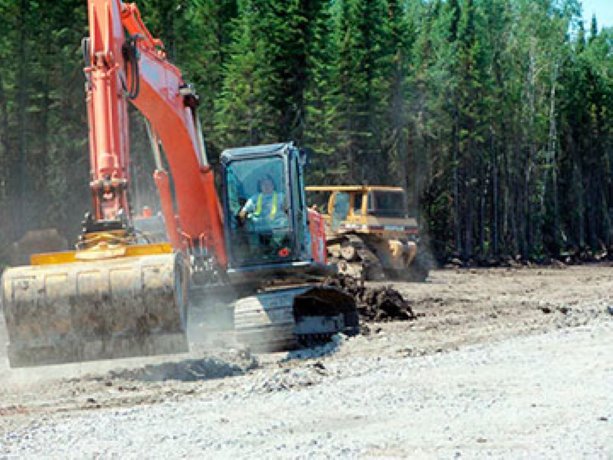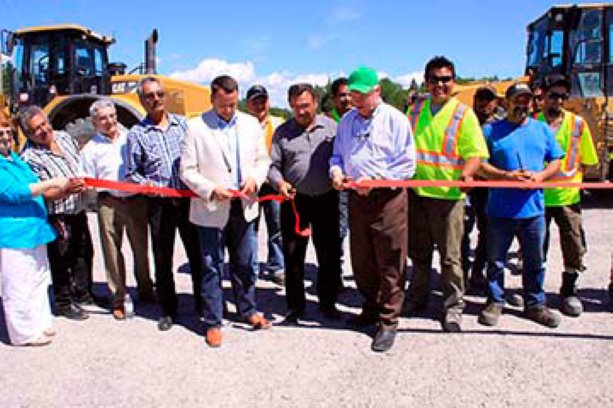A massive new road network reaching into northern Manitoba is not only linking remote communities with all-season transportation access, it’s providing First Nations communities with construction employment and expertise.
Bloodvein First Nation, a community located almost 210 km north of Winnipeg, recently celebrated the completion of a 2.5-km access road linking the community to a 1,000-km road network under construction to the north and east side of Lake Winnipeg. It represents the first road link between a remote community and Winnipeg since 1979.
The province has committed $1.2 billion to the road network project, at $75 million per year over the next 15 years. Currently, Winnipeg is only accessible from Bloodvein through a combination of ice roads and ferry crossings. However, the all-season road is still under construction and an additional 27 km of road and four bridges must still be built to complete the link to Bloodvein. A year-round connection to Winnipeg is anticipated by 2014.
Bloodvein First Nation workers have undertaken a significant amount of pre-construction work on the all-season road, particularly wilderness clearing, site preparation and gravel crushing. In turn, that experience and the profits from earlier contracts have allowed the community to form its own construction company, Bloodvein First Nation Construction Inc.
The company has purchased a fleet of heavy equipment that includes a gravel crusher, three trucks, two excavators, a water truck and a sewer truck. The community has also established two quarries that will continue to supply construction crews as the road moves north.
The Bloodvein project was announced earlier this year by the governments of Canada and Manitoba and Bloodvein First Nation.The federal government committed $2.67 million, the provincial government committed $830,000 and Bloodvein First Nation committed $390,000.
Work on the gravel road began in January, with 50 local residents employed on the project. Although the challenging project was required to cut through muskeg and the Precambrian Shield, it was completed in three-and-a-half months, both ahead of schedule and under budget.
“The all-season road will continue being built past Bloodvein, linking other remote communities and allowing the construction company to continue working on the project,” says Ernie Gilroy, CEO of East Side Road Authority (ESRA), the government agency managing the construction project. “Part of the federal commitment to the project stipulated that Bloodvein would receive $15 million in sole source contracts to clear wilderness and crush gravel over five years.”
ESRA, in turn provides the local construction company with a mentoring relationship that includes project and contract administration services, and assistance in establishing and maintaining a corporation. It also includes safety training, and guidance regarding construction practices and environmental management.
Other sole source community contracts on the all-season road include a joint partnership with Stirling Ducharme, a Métis contractor and road builder based in St. Laurent.
Any contractor working on the project will also be required to hire a fixed percentage of local workers and to buy available services locally. That includes a requirement for bridge project contractors to use a construction camp located in Bloodvein.
“Our government is committed to investing in local infrastructure and this partnership represents how these investments benefit local residents,” says John Duncan, Minister of Aboriginal Affairs and Northern Development.
“The completion of the road will boost local economic growth and we look forward to working on similar initiatives that will create opportunities for Aboriginal people to participate in Canada’s social, cultural and economic life.”
Gilroy notes that the 15-year commitment to the all-weather road project will not cover its completion.
“If we get Ottawa on board for the rest of the project, the entire 1,000 km of road could be built in that 15-year period,” he says.




Recent Comments
comments for this post are closed